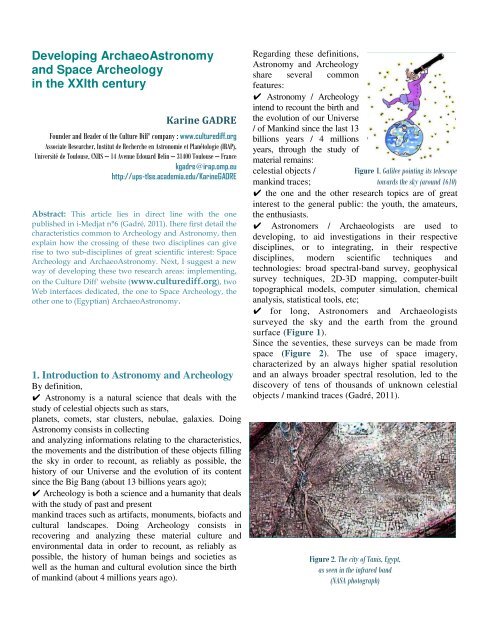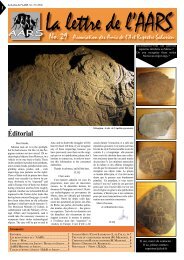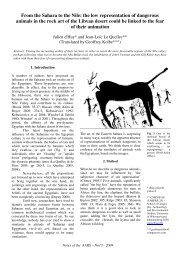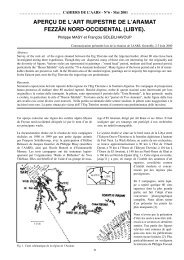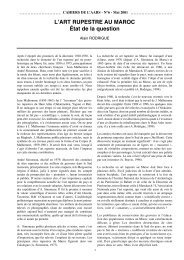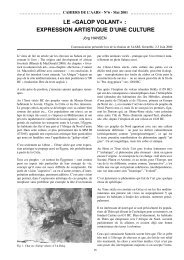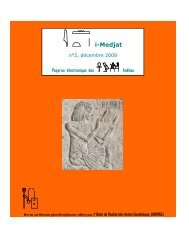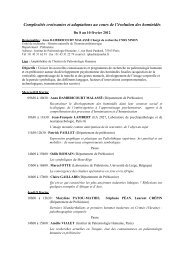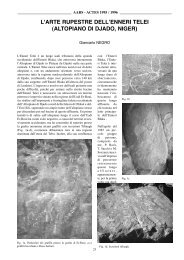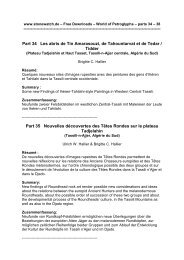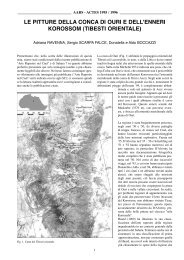i-Medjat - Culture Diff
i-Medjat - Culture Diff
i-Medjat - Culture Diff
You also want an ePaper? Increase the reach of your titles
YUMPU automatically turns print PDFs into web optimized ePapers that Google loves.
Developing ArchaeoAstronomy<br />
and Space Archeology<br />
in the XXIth century<br />
Karine GADRE<br />
Founder and Header of the <strong>Culture</strong> <strong>Diff</strong>' company : www.culturediff.org<br />
Associate Researcher, Institut de Recherche en Astronomie et Planétologie (IRAP),<br />
Université de Toulouse, CNRS – 14 Avenue Edouard Belin – 31400 Toulouse – France<br />
kgadre@irap.omp.eu<br />
http://ups-tlse.academia.edu/KarineGADRE<br />
Abstract: This article lies in direct line with the one<br />
published in i-<strong>Medjat</strong> n°6 (Gadré, 2011). Ihere first detail the<br />
characteristics common to Archeology and Astronomy, then<br />
explain how the crossing of these two disciplines can give<br />
rise to two sub-disciplines of great scientific interest: Space<br />
Archeology and ArchaeoAstronomy. Next, I suggest a new<br />
way of developing these two research areas: implementing,<br />
on the <strong>Culture</strong> <strong>Diff</strong>' website (www.culturediff.org), two<br />
Web interfaces dedicated, the one to Space Archeology, the<br />
other one to (Egyptian) ArchaeoAstronomy.<br />
1. Introduction to Astronomy and Archeology<br />
By definition,<br />
✔ Astronomy is a natural science that deals with the<br />
study of celestial objects such as stars,<br />
planets, comets, star clusters, nebulae, galaxies. Doing<br />
Astronomy consists in collecting<br />
and analyzing informations relating to the characteristics,<br />
the movements and the distribution of these objects filling<br />
the sky in order to recount, as reliably as possible, the<br />
history of our Universe and the evolution of its content<br />
since the Big Bang (about 13 billions years ago);<br />
✔ Archeology is both a science and a humanity that deals<br />
with the study of past and present<br />
mankind traces such as artifacts, monuments, biofacts and<br />
cultural landscapes. Doing Archeology consists in<br />
recovering and analyzing these material culture and<br />
environmental data in order to recount, as reliably as<br />
possible, the history of human beings and societies as<br />
well as the human and cultural evolution since the birth<br />
of mankind (about 4 millions years ago).<br />
Regarding these definitions,<br />
Astronomy and Archeology<br />
share several common<br />
features:<br />
✔ Astronomy / Archeology<br />
intend to recount the birth and<br />
the evolution of our Universe<br />
/ of Mankind since the last 13<br />
billions years / 4 millions<br />
years, through the study of<br />
material remains:<br />
celestial objects / Figure 1. Galilee pointing its telescope<br />
mankind traces; towards the sky (around 1610)<br />
✔ the one and the other research topics are of great<br />
interest to the general public: the youth, the amateurs,<br />
the enthusiasts.<br />
✔ Astronomers / Archaeologists are used to<br />
developing, to aid investigations in their respective<br />
disciplines, or to integrating, in their respective<br />
disciplines, modern scientific techniques and<br />
technologies: broad spectral-band survey, geophysical<br />
survey techniques, 2D-3D mapping, computer-built<br />
topographical models, computer simulation, chemical<br />
analysis, statistical tools, etc;<br />
✔ for long, Astronomers and Archaeologists<br />
surveyed the sky and the earth from the ground<br />
surface (Figure 1).<br />
Since the seventies, these surveys can be made from<br />
space (Figure 2). The use of space imagery,<br />
characterized by an always higher spatial resolution<br />
and an always broader spectral resolution, led to the<br />
discovery of tens of thousands of unknown celestial<br />
objects / mankind traces (Gadré, 2011).<br />
Figure 2. The city of Tanis, Egypt,<br />
as seen in the infrared band<br />
(NASA photograph)


